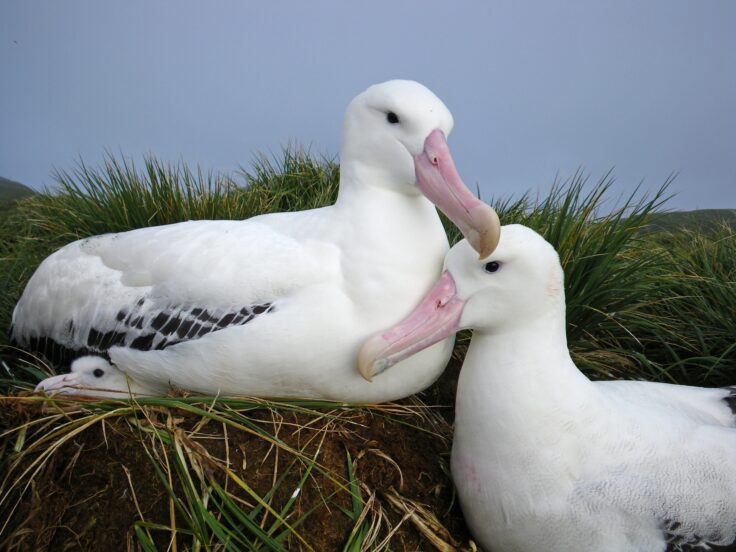Antarctic seabird community structure remains unaffected by changes in food availability
A new study of sub-Antarctic seabirds shows that their community structure (how they co-exist and share resources) is unaffected by annual changes in availability of different types of prey, including Antarctic krill (a small shrimp-like crustacean). Reporting this month (November) in the Journal of Animal Ecology, a team of scientists studied the diet and feeding relationships of 13 species of seabirds on the sub-Antarctic island of Bird Island, near South Georgia. The results show that even if food availability changes, the different seabird species maintain roughly the same position in the food web.
The birds’ diets are made up by fish, squid and krill, and as krill abundance has fluctuated around South Georgia over the last 40 years, scientists were interested to see if this was impacting the birds. The team examined diet samples and made chemical analyses of the birds’ feathers.
Lead author Dr Rocio Moreno from British Antarctic Survey (BAS) says:
“Our study is the first in recent decades to examine dietary changes in seabird communities over time. What’s interesting is that the detailed picture of the Antarctic ecosystem provided here, encompassing much of the natural variability environmental conditions in the region, demonstrates that, spite marine ecosystem complexity, it is possible to use pragmatic approaches for assessing long-term changes in community interactions”.

The birds are structured in such a way that ensures survival of the species and co-existence is possible, despite changes in their environment.
The researchers analysed diet data collected over a 28-year period from birds located near the
British Antarctic Survey’s research station on Bird Island.
BAS bird ecologist Dr Richard Phillips, also an author on the paper, says:
“This work is important for understanding more about the response of seabird communities to a changing ecosystem. Clearly the community structure is robust, reflecting the ability of each species to adapt its foraging strategy when there is limited food. As global climate change is likely to produce even larger fluctuations in food availability, we will need to monitor just how adaptable they are in the future.”
Another outcome from the study was the accuracy of using chemical analysis of the birds’ feathers as a way to monitor the diet of individual species.
